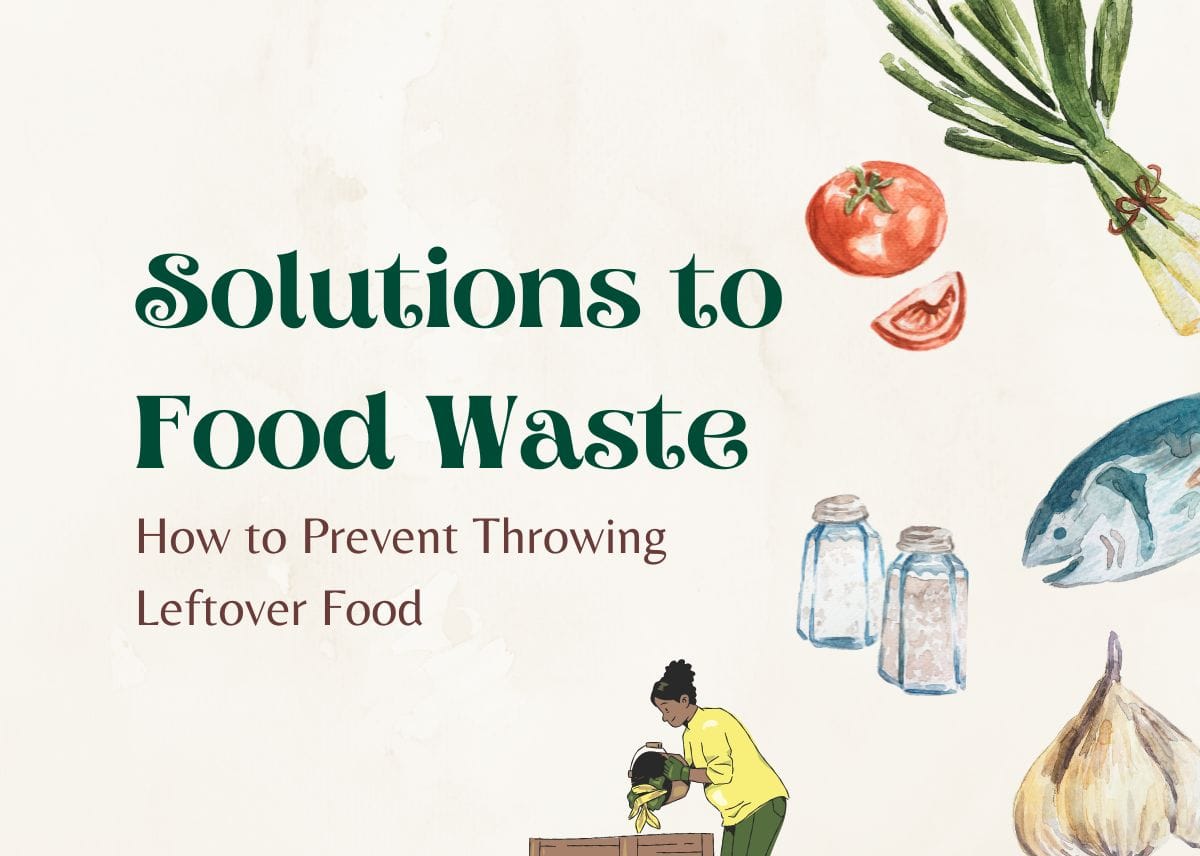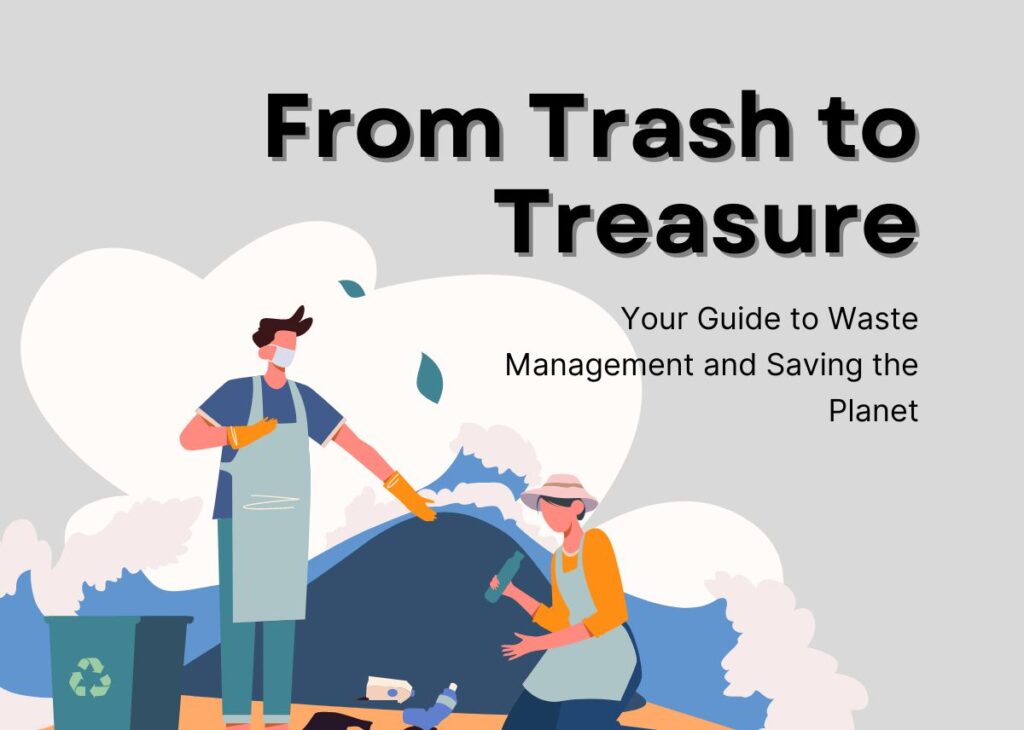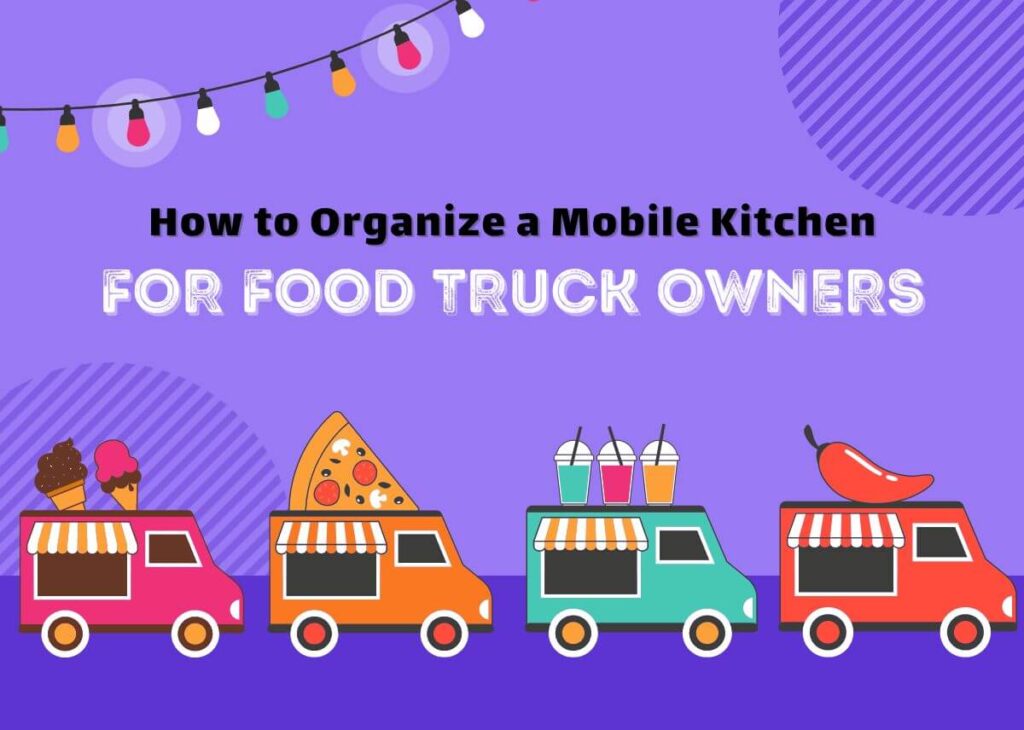Solutions to Food Waste: How to Prevent Throwing Leftover Food

Solutions to food waste – Food waste is a major problem in the world today, with roughly one-third of all food produced going uneaten. Not only does this wastes valuable resources and contribute to environmental degradation, but it also has severe economic and social consequences. The good news is that many practical solutions to food waste can help prevent throwing away leftover food.
Table of Contents
Food waste refers to the edible parts of plants and animals that are not used or consumed, either during production, processing, distribution, or consumption. This can include anything from unharvested crops to discarded leftovers.
According to the Food and Agriculture Organization (FAO), global food waste accounts for about 8% of total greenhouse gas emissions. With the world population projected to reach 9.7 billion by 2050, food waste prevention is becoming increasingly important.
The Importance of Preventing Food Waste Preventing food waste has multiple benefits. From an environmental perspective, reducing the amount of food thrown away can help reduce greenhouse gas emissions and conserve valuable resources, such as water and land.
Additionally, reducing food waste can save households and businesses money and help ensure food is available for those in need. Thus, knowing about the importance of food safety and finding ways to reduce food wastage has become the need of the hour,
Here we will explore the causes and consequences of food waste and outline practical solutions that can help prevent throwing away leftover food.
Causes of Food Waste
Several key factors contribute to food waste, including overproduction, expiration dates, poor planning, and food packaging.
- Overproduction: Overproduction refers to the excess food that is produced, either in the fields or in processing plants. This can be due to various factors, including poor planning, natural disasters, and unexpected changes in demand.
- Expiration Dates: Expiration dates are another major contributor to food waste. The “best by” and “use by” dates on food packaging can be misleading, causing consumers to throw away food that is still safe.
- Poor Planning: Poor planning is another cause of food waste, particularly in households. People may buy more food than they need or forget to eat leftovers before they spoil.
- Packaging: Food packaging can also contribute to food waste, as excess packaging can make it difficult to see how much food is left and to keep track of expiration dates.
Consequences of Food Waste
The consequences of food waste are far-reaching and impact the environment and society.
- Environmental: From an environmental perspective, food waste contributes to greenhouse gas emissions and the depletion of natural resources. When food is thrown away and ends up in landfills, it decomposes and releases methane, a potent greenhouse gas. Additionally, producing and transporting food consumes valuable resources, such as water and fuel.
- Economic: The economic consequences of food waste are significant, as well. Producing, processing, and transporting food is expensive, and when that food is thrown away, those resources are wasted. Additionally, households and businesses can save money by reducing food waste and finding ways to use leftovers.
- Social: The social consequences of food waste are also significant. With millions of people going hungry every day, it is important to ensure food is not wasted. Donating excess food to food banks and other organizations can help address this issue.
Solutions to Food Waste
There are several practical solutions to food waste, including meal planning and grocery shopping, proper storage of food, creative ways to use leftovers, composting and donating food, and changing food packaging. Furthermore, one can also enroll for a food handling course to devise a plan to prevent food wastage.
- Meal planning and grocery shopping: Meal planning and grocery shopping are key to reducing food waste. By planning meals in advance and shopping with a list, people can ensure that they buy only what they need and avoid buying too much food that will go to waste. It’s also helpful to regularly check the pantry and refrigerator to see what food needs to be used before it spoils.
- Proper storage of food: Proper storage of food is also important in reducing food waste. Keeping food fresh for longer by storing it in airtight containers and at the right temperature can help prevent spoilage. Freezing leftovers and keeping a list of what’s in the freezer can also help prevent waste.
- Creative ways to use leftovers: Another solution to food waste is finding creative ways to use leftovers. For example, leftover vegetables can be used to make soup or stir-fry, and stale bread can be turned into croutons or breadcrumbs.
- Composting and donating food: Composting and donating food are also important solutions to food waste. Composting organic waste, such as fruit and vegetable scraps, helps to reduce greenhouse gas emissions and conserve resources. Donating excess food to food banks and other organizations can help ensure that it is used to feed people in need rather than being thrown away.
- Changing food packaging: Finally, changing food packaging is an important solution to food waste. By using more transparent packaging that displays expiration dates, people can better track when food spoils and prevent waste. Additionally, using more sustainable packaging, such as biodegradable materials, can help reduce waste and conserve resources.
Also See
Burritos With Chickpeas And Brown Rice
Conclusion
Food waste is a serious problem with serious consequences for the environment and society. However, by taking proper steps to prevent food waste, people can make a significant impact in reducing food waste and conserving resources.
The call to action is for individuals and businesses to take action to reduce food waste. Whether by meal planning, composting, or using more sustainable packaging, every small step can make a difference in the fight against food waste. By working together, we can help ensure that food is used to feed people, not wasted in landfills.
In conclusion, food waste is a complex issue that requires a multi-faceted approach. By taking steps to prevent waste and to find creative solutions, we can help ensure that food is used to its fullest potential and that valuable resources are conserved for future generations.
About the Author
Hi, I’m Eleena Wills. Being a writer and blogger, I strive to provide informative and valuable articles to people. With quality, constructive, and well-researched articles, one can make informed choices. I cover a wide range of topics, from home improvement to hair styling and automotive. You can also follow me on Facebook & Twitter.
Also Read:
- Unsung Hero- Sapna Kiran Nayak Who Made Sure No Food Is Wasted
- 8 Ways To Cut On Your Monthly Food Budget
- 6 Simple Ways To Eat Healthy On A Tight Budget







